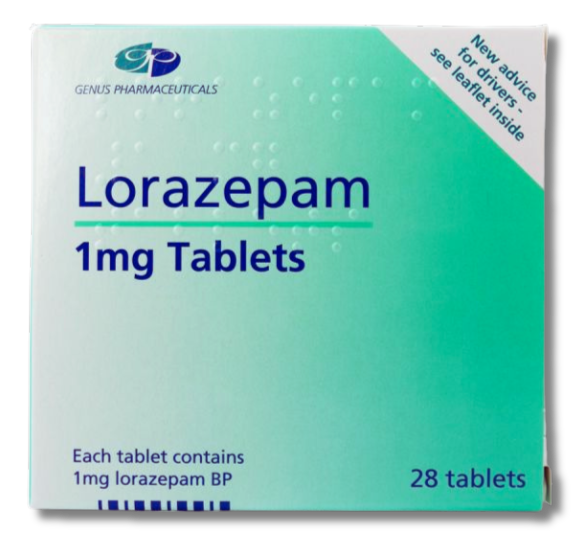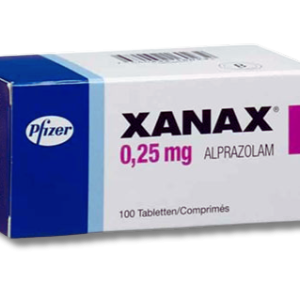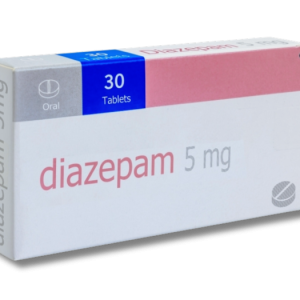Description
Lorazepam belongs to the benzodiazepine group of prescription medicines. Doctors often prescribe it for anxiety disorders, sleep problems, panic attacks, or to help calm patients before procedures.
This medication slows brain activity, making people feel more relaxed and less anxious.
Many people in the UK wonder how to get lorazepam safely and legally, especially through online pharmacies. Medical supervision is essential because lorazepam can be habit-forming, and stopping suddenly might cause withdrawal symptoms.
Understanding proper use, side effects, and safety is key for anyone considering lorazepam. If you’re thinking about this treatment, it’s worth knowing what to expect and how to get it safely.
Essential Information on Lorazepam
Lorazepam is a prescription-only medicine from the benzodiazepine group. It’s mainly used for anxiety and sleep issues.
Lorazepam is the active ingredient, and you can find it in different tablet strengths for short-term treatment.
What Is Lorazepam?
Lorazepam treats anxiety disorders and sleep problems related to anxiety. It works on the central nervous system to create a calming effect.
Doctors usually prescribe it for short-term use, typically 2-4 weeks. Sometimes, they use it as a pre-medication to help patients relax before medical procedures.
You’ll often see lorazepam sold under the brand name Ativan. It helps by boosting the effects of a brain chemical called GABA.
This action lowers excessive brain activity that can cause anxiety or trouble sleeping. Most people feel relief within 30-60 minutes after taking a dose.
Active Ingredient and Formulations
The main ingredient is lorazepam, which brings the therapeutic effects. Each tablet also contains inactive ingredients to hold it together.
Lorazepam tablets come in these strengths:
- 0.5 mg tablets
- 1 mg tablets
- 2.5 mg tablets
Inactive ingredients include lactose, microcrystalline cellulose, and magnesium stearate. If you have galactose intolerance or glucose-galactose malabsorption, let your doctor know before starting lorazepam.
These different strengths let doctors tailor the dose to each person’s needs.
Prescription Only Status
Lorazepam is a prescription only medicine (POM). You can’t buy it without a prescription from a healthcare professional.
Only registered doctors, dentists, or other authorised prescribers can write a prescription for lorazepam. Pharmacists will always check for a valid prescription before dispensing.
Prescription-only status means patients get a medical assessment before starting treatment. Doctors consider your condition, medical history, and other medicines before prescribing.
This system exists to help prevent misuse and make sure patients get proper monitoring.
Patient Guidance and Accessibility
Patients get key information about lorazepam from Patient Information Leaflets (PILs). These are available in print and electronic forms.
The electronic Medicines Compendium (eMC) offers options like large print, Braille, and audio CD to make sure everyone can access the details they need.
Patient Information Leaflet (PIL) Overview
The Patient Information Leaflet explains what lorazepam is and what it treats. It covers anxiety relief and sleep problems linked to anxiety.
The PIL lists safety information, proper dosing, and possible side effects. It also warns about driving after taking lorazepam.
Every lorazepam pack includes a PIL. Manufacturers such as Neuraxpharm UK Ltd provide detailed leaflets with product codes like PL 49718/0117.
The leaflet follows a standard format. Section 1 talks about what lorazepam tablets are and their uses, while Section 2 explains what to know before taking them.
Understanding the PIL and ePIL
The electronic Patient Information Leaflet (ePIL) gives the same info as the printed version. Patients can find ePILs on the eMC website.
It’s easy to search for specific details using the A-Z list. You can also share the ePIL with your healthcare provider.
Doctors and pharmacists often point patients to the ePIL for extra details. Since it’s electronic, it stays updated with the latest safety info.
The eMC platform hosts thousands of medication leaflets. Patients can check the most current prescribing information there.
Accessibility Options: Large Print, Braille, and Audio CD
The eMC accessibility service helps people with visual impairments. You can request alternative formats by calling 0800 198 5000 for free.
Large print versions use bigger text, making them easier to read for those with mild visual problems. The content stays the same as the standard PIL.
Braille formats are available for patients who are blind or have severe vision loss. Specialists convert the PIL text into Braille.
Audio CD options give spoken medication information. Professional readers record the whole PIL so you can listen to dosing instructions and safety warnings.
Requests usually take about 15 working days. You’ll need to provide your name, address, and details about your medication.
Is it easy to buy Lorazepam online in the United Kingdom?
To buy Lorazepam online in the UK, you need a valid prescription from a doctor. Lorazepam is a controlled substance under UK law.
Some legitimate online pharmacies sell Lorazepam, but only after you provide a prescription.
Legal Requirements
- Valid UK prescription required
- Must be from a registered doctor
- Prescription verification is necessary
- Age restrictions apply (13+ for anxiety)
Some websites claim to sell Lorazepam without a prescription. These sites break the law and may offer fake or unsafe products.
Registered UK pharmacies offer online services with proper checks. They verify your prescription and supply genuine medication.
Common Online Options
Many reputable pharmacies offer next-day delivery. Some even provide same-day delivery in certain London areas.
Prices usually range from £1 to £3 per tablet, depending on the strength. The 1mg and 2.5mg tablets are most common.
Stick to MHRA-registered online pharmacies. You can find these on the official government list of approved suppliers.
Safety Concerns
Unregulated websites might sell counterfeit medicines. These can contain dangerous substances or the wrong dose.
It’s best to talk to your GP first before buying online. Doctors can point you to trusted pharmacy services.
Prescription-only status protects patient safety. Medical supervision helps prevent misuse and bad reactions.
Safety, Side Effects, and Reporting
Lorazepam can cause side effects, from common drowsiness to serious breathing problems that need emergency care. The MHRA Yellow Card scheme lets patients and healthcare professionals report suspected side effects to help improve medicine safety.
Possible Side Effects of Lorazepam
Common Side Effects
More than 1 in 100 people feel sleepy or drowsy during the day when taking lorazepam. Dizziness and confusion can also happen, usually within 20 to 30 minutes after a dose.
Serious Side Effects
Some rare but serious side effects affect fewer than 1 in 1,000 people. Call a doctor or 111 right away if you notice:
- Liver problems: Yellow skin or eyes
- Mental health changes: Hallucinations, delusions, or odd mood changes
- Physical symptoms: Frequent falls or memory loss
Children and adults over 65 might feel more agitated, restless, or aggressive than usual.
Emergency Situations
Call 999 or go to A&E immediately if you have:
- Trouble breathing or very slow breathing
- Swelling of lips, throat, or tongue (signs of severe allergic reaction)
- Very fast or labored breathing
Long-term Effects
Taking lorazepam for more than four weeks can cause withdrawal symptoms. Doctors usually lower the dose slowly to avoid these effects when stopping treatment.
How to Report Side Effects
Reporting Process
You can report suspected side effects through the MHRA Yellow Card scheme. This system collects info about possible problems with medicines and medical devices.
Both patients and healthcare professionals can report. If you think a medicine caused a side effect, you can make a report.
What to Report
Report any side effect you suspect, even if you’re not certain lorazepam caused it. This includes:
- New symptoms after starting lorazepam
- Worsening of existing health issues
- Unexpected reactions or effects
These reports help spot patterns and improve understanding of medicine safety.
MHRA Yellow Card Scheme and Patient Involvement
About the Scheme
The MHRA Yellow Card scheme is the UK’s way of collecting reports about suspected side effects. It’s been running for years to help keep medicines safe.
Patients can submit reports online at the Yellow Card website. The system accepts reports about prescription and over-the-counter medicines, as well as medical devices.
Patient Participation
Patient reports offer valuable real-life details on how medicines affect people day-to-day. These reports add to clinical trial data and help identify rare side effects.
The MHRA encourages everyone to report, even if you’re unsure lorazepam is to blame. Medical professionals review all reports to weigh the risks.
Using Report Data
The MHRA uses Yellow Card data to spot safety signals and act when necessary. This might mean updating medicine information or issuing safety warnings.
Discontinued Medicines and Safety Updates
Safety Monitoring
The MHRA keeps monitoring medicine safety even after approval. Ongoing checks can change how medicines are used or prescribed.
If safety concerns arise, medicines can be withdrawn from the market. The MHRA shares updates and guidance on discontinued medicines.
Public Assessment Reports
The MHRA publishes Public Assessment Reports with details on medicine approvals and safety decisions. These help patients and healthcare professionals understand regulatory choices.
Safety Public Assessment Reports focus on regulatory actions related to safety. Patients can read these documents to keep up with medicine updates and changes.
Additional Medical Information and Support
Patients and healthcare professionals can find detailed medical information through official support channels and regulatory databases. Resources like ATC codes and RMM directories offer standardised classifications and extra safety information.
Contacting Medical Information and Customer Care
Pharmaceutical companies keep dedicated medical information lines open for healthcare professionals and patients who need clinical guidance about lorazepam.
These services give evidence-based info about drug interactions, contraindications, and clinical studies.
Medical information teams answer specific questions about dosing, administration, and safety concerns.
Customer care lines help with general enquiries about lorazepam products. They handle questions about availability, packaging, and how to report adverse events.
Most services run during regular business hours, though some offer 24-hour support for urgent medical questions.
Healthcare professionals usually get priority access to these specialized services.
ATC Code and Regulatory Directories
Lorazepam’s ATC code is N05BA06 in the Anatomical Therapeutic Chemical classification system.
This code marks it as a benzodiazepine derivative in the nervous system group.
The ATC code helps healthcare systems track prescribing trends and monitor how the drug gets used.
It also makes international communication easier between healthcare professionals and regulatory authorities.
Regulatory directories like the MHRA database list licensed indications and safety updates.
These sources keep current prescribing information and regulatory decisions on hand.
RMM Directory and Further Resources
Risk Minimisation Measures (RMM) directories offer extra safety materials for lorazepam as required by regulatory authorities.
These resources include healthcare professional communications and patient safety info.
The RMM directory gives access to updated Patient Information Leaflets (PILs) and prescriber guidance documents.
These materials focus on safety concerns and risk mitigation strategies.
Other resources include clinical guidelines from NICE and professional bodies with treatment recommendations.
Educational materials support healthcare professionals in safe prescribing and proper monitoring for benzodiazepine therapy.
Frequently Asked Questions
Lorazepam brings up plenty of questions about side effects, dosing, and its medical uses.
Patients often ask about differences between lorazepam and similar medications, if generics exist, and what to consider for dose changes.
What are the common side effects of taking Lorazepam?
Drowsiness and dizziness are the most common side effects of lorazepam.
These happen because the medication ramps up GABA activity in the brain.
Some people notice confusion or memory issues, especially at higher doses.
Coordination problems and feeling unsteady can show up too.
Headaches or weakness might occur while taking lorazepam.
Nausea and appetite changes are possible but less frequent.
Serious side effects like breathing problems or severe allergic reactions need immediate medical help. Don’t wait if these show up.
How does the dosage of Lorazepam affect its efficacy and safety?
Lower doses usually ease anxiety with fewer side effects.
Higher doses boost both the benefits and the risk of adverse reactions.
The medication often reaches peak effect within two hours.
For most people, effects last about six to eight hours.
Starting low helps lower the risk of dependence.
Doctors adjust the dose based on how each person responds and tolerates it.
Elderly patients often need less because their bodies handle the medication more slowly.
In what ways is Lorazepam typically utilised in medical treatment?
Lorazepam treats anxiety disorders and sleep issues tied to anxiety.
Doctors usually prescribe it short-term to avoid dependency.
It’s used as pre-medication before surgery or dental work to help calm patients.
The medication also treats certain seizures.
It can help manage withdrawal symptoms from alcohol or other substances.
Hospitals sometimes use lorazepam for sedation during procedures.
Emergency departments may give it for severe agitation.
What are the differences between Lorazepam and Xanax in terms of effects and usage?
Both lorazepam and Xanax are benzodiazepines used for anxiety disorders.
They work by increasing GABA activity in the brain.
Lorazepam tends to last longer in the body than Xanax.
Xanax acts faster but its effects wear off sooner.
Doctors might pick lorazepam for longer-lasting anxiety relief.
Xanax could be better for panic attacks because it works quickly.
Both carry similar risks for dependence and withdrawal.
The choice really depends on patient needs and medical history.
Is there a generic equivalent for the brand-name drug Ativan?
Yes, generic lorazepam is widely available and matches Ativan chemically.
Generics have the same active ingredient and strengths.
They work just like the brand-name medication and meet the same standards for safety and effectiveness.
Generic lorazepam usually costs much less than Ativan.
Most pharmacies stock the generic by default.
Patients can ask for either generic or brand-name at the pharmacy.
Insurance plans often prefer generics because they’re cheaper.
What should be considered before adjusting the dose of Lorazepam?
Only change your Lorazepam dose with a doctor’s guidance. If you stop suddenly, you might face dangerous withdrawal symptoms.
Doctors look at your current symptoms and any side effects before making adjustments. They also weigh factors like age, kidney health, and other meds you’re taking.
It’s much safer to lower the dose gradually rather than all at once. That way, you lower the risk of withdrawal or rebound anxiety sneaking up on you.
If you notice new side effects or the medication isn’t working as well, let your doctor know. Staying in touch with your healthcare provider makes treatment safer and more effective.



Reviews
There are no reviews yet.